No one would ever accuse me or my Dartmouth distance-running teammates of being strong. Good endurance? Yes. Mental toughness? Check. Chiseled upper bodies? Not so much. In college you were far more likely to catch me snarfing down a York Peppermint Pattie than loading York plates for a bench press. Our weight-throwing teammates called us pencils. We called them lummoxes and ran away. Oh, youthful humor.
The Olympic Auditorium
Just hours after the Opening Ceremony concluded on the evening of July 30, the weightlifting lummoxes kicked off the competition in the Olympic Auditorium. Built in 1924, primarily as a boxing venue, the building at the corner of 18th and Grand Avenue in downtown Los Angeles boasted 55-foot-high ceilings and seats for more than 10,000 fans. For a few months before the third Madison Square Gardens opened its doors, it was the largest indoor stadium in the country. And for that first night of weightlifting it made for a very empty building.
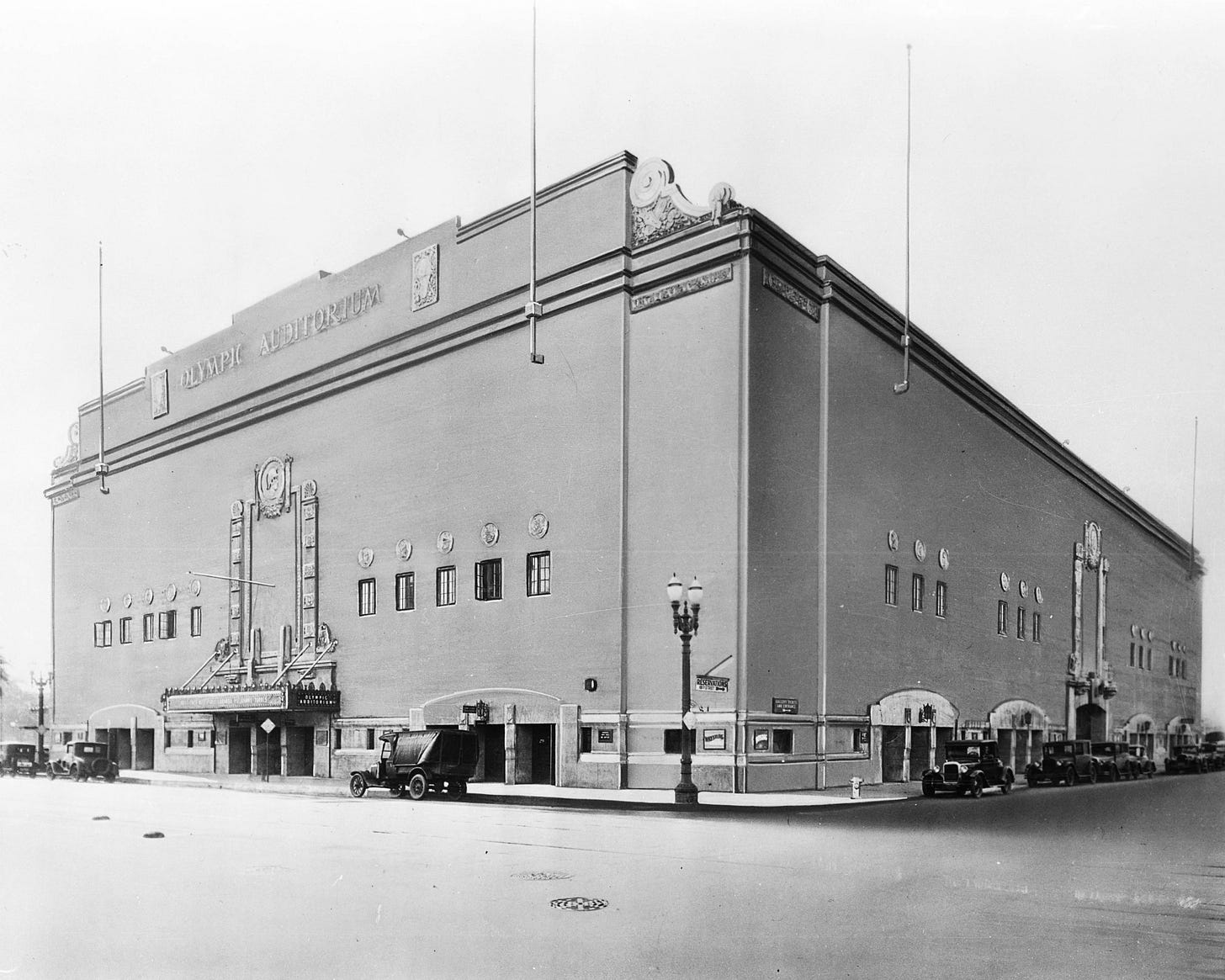
Only 200 spectators bothered to show up that first evening. Attendance improved little the second, and final, day of the competition. That the event would rank last in attendance at these Games wasn’t a complete surprise. Although the IOC had included various forms of weightlifting beginning with Athens in 1896 and had standardized the three disciplines in 1928, the sport was still trying to shake its circus-like feel where strongmen performed rather than competed.
In Los Angeles, 28 athletes from 8 nations competed across 5 weight classifications. Frenchmen Rene Duverger, a 21-year-old, 5’6” sometimes dance instructor won the lightweight division (under 148 pounds), making him the first to win gold at the 1932 Olympics. He won convincingly, taking all three disciplines—the snatch, the clean and jerk, and the military press—with a combined total of 715 pounds. Fellow Frenchman Louis Hostin won the light heavyweight division later that same evening, the second of three golds for the French who topped the weightlifting medal table. No doubt the little Frenchman and Modern Olympics founder Pierre de Coubertin was proud of his countrymen for laying early claim to the Fortius (strength) of his Olympic motto.
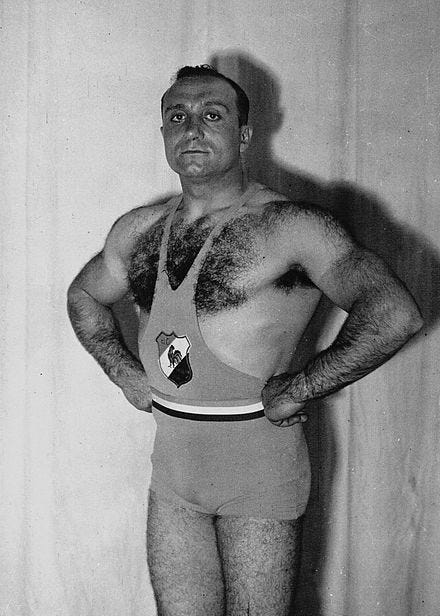
The 10-man American team finished a disappointing 7th with just two bronze medals. Their poor performance would inspire a great American brand.
York Barbell Company
Bob Hoffman was disgusted with the poor American showing. The competitive weightlifter had already dabbled in manufacturing weights while building a successful oil burner company in York, Pennsylvania. But soon after the 1932 Olympics he felt compelled to do more, founding the York Barbell Company.
Hoffman grew up just east of Pittsburgh, where, after a childhood battle with typhoid fever, took to jerry-rigged weights to rebuild his strength. It worked. He ended up a champion weightlifter in his 20s.
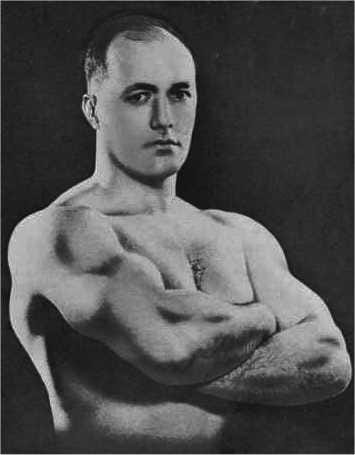
Alongside his company, he formed the York Barbell Club, making the city the place for aspiring American weightlifters and, in time, bodybuilders. Beginning with Sicilian-born American featherweight Tony Terlazzo in 1932, Hoffman would coach Olympic weightlifters for more than 30 years. Terlazzo would improve on his 1932 bronze to become the first American weightlifter to win gold in 1936. Fellow Olympian John Grimek, the first Mr. America and the first Mr. Universe, was another of Hoffman’s early disciples. His body is said to be the inspiration for the 13’-tall rotating statue atop company headquarters.
York barbells and Olympic plates were one of three official Olympic suppliers for many years until, fittingly, Los Angeles in 1984. Beginning with the 2008 Beijing Olympics, a Chinese manufacturer has been the exclusive supplier. I’m skeptical any tariff is going to change that.
Hoffman was also an early proponent of supplements and, unfortunately, pioneered the use of anabolic steroids to increase muscle mass in the 1950s. Alongside weightlifters from the Soviet Union who first participated in the 1952 Olympics, no group of athletes had a more detrimental impact on steroid abuse in sport than the York Barbell Club. What started in weightlifting, soon permeated the world of track & field sprinting and weight throwing events.
Before he died in the 1980s, Hoffman was dubbed the “Father of World Weightlifting” by the International Weightlifting Federation. Today the Weightlifting Hall of Fame is located in York, aka “Muscletown USA.” I’ll bet none of my old running teammates have ever been there.
I, for one, will never look at my York dumbbells the same way again. But to be honest, I’ll probably still opt for the minty chocolate goodness when given the choice.




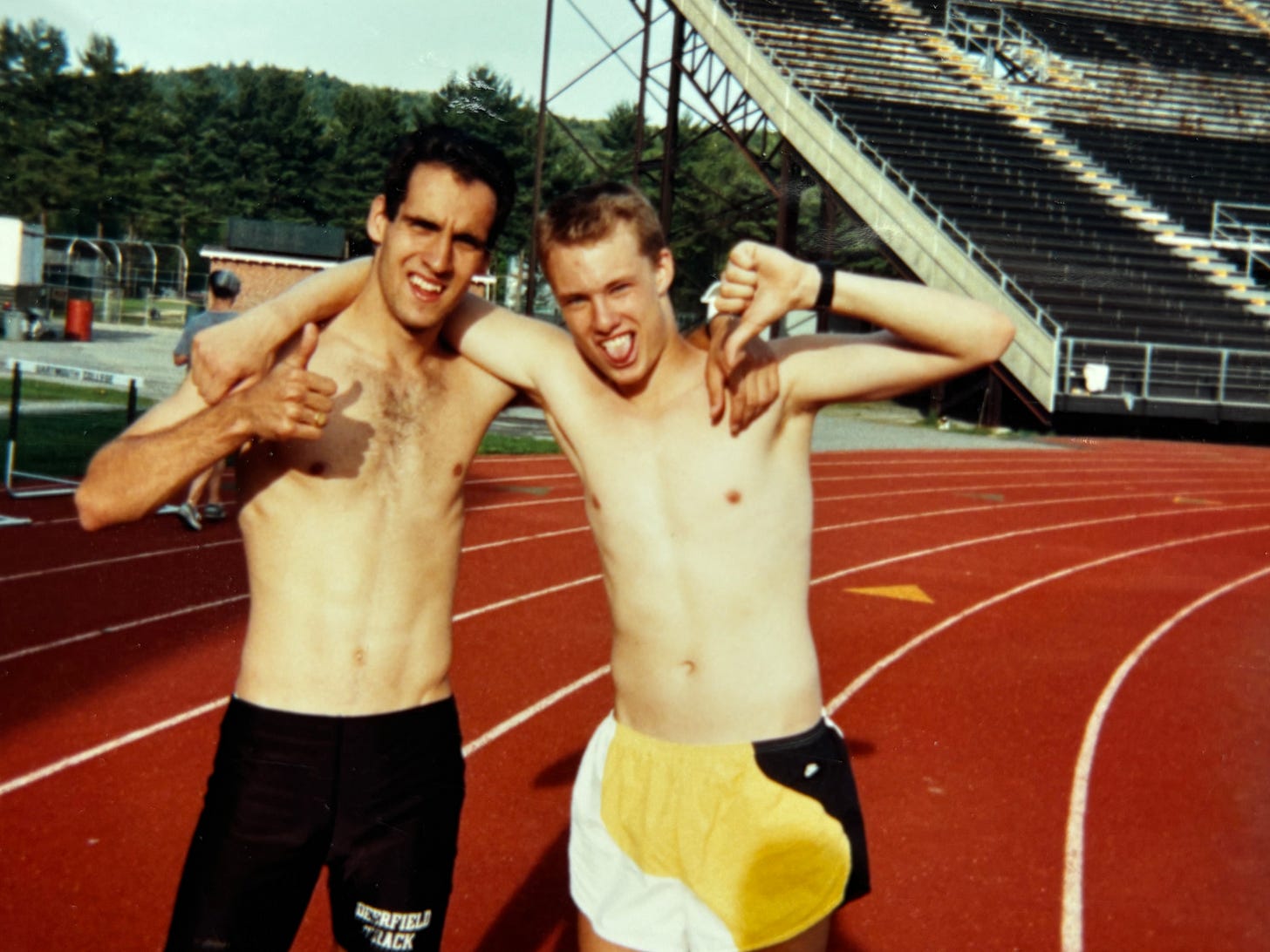
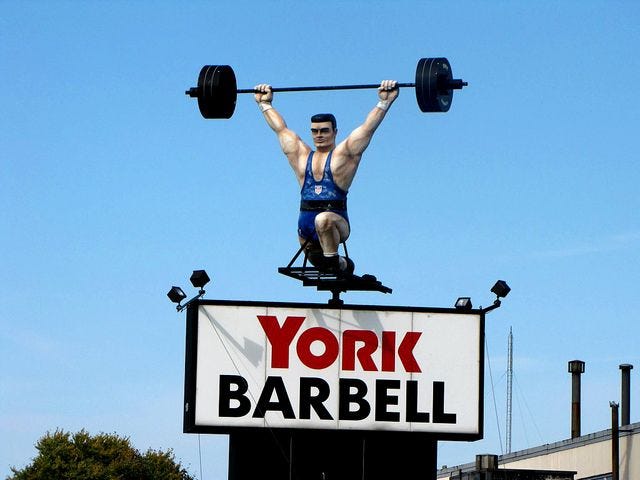
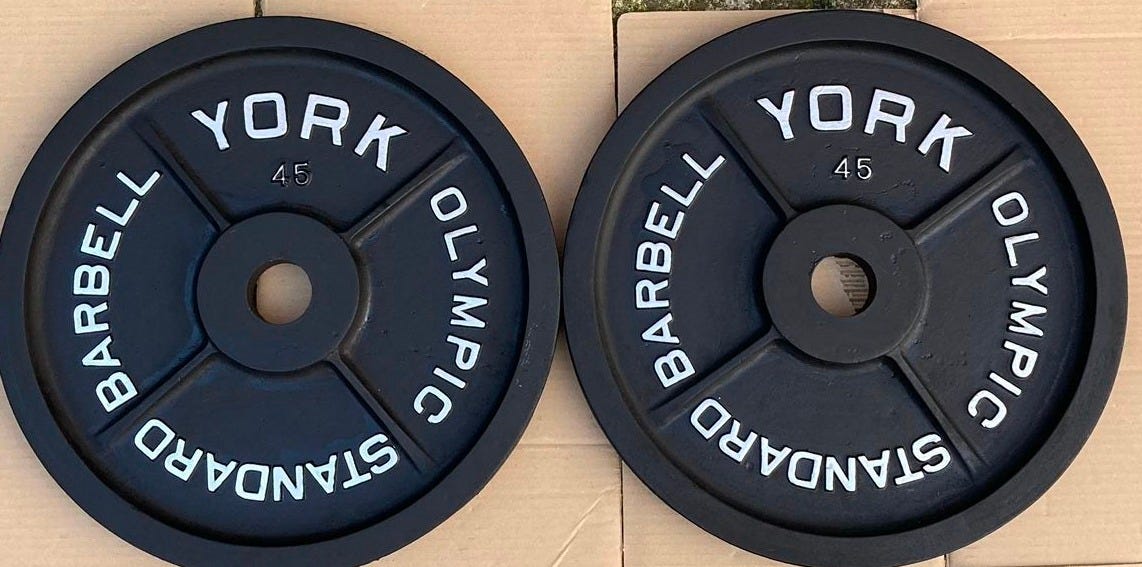

I'll never look at my old rusty YORK plates the same way again and thanks for making me crave a peppermint patty at 8:30am!
Super Funny! AND very interesting. It was painful just watching those weightlifters at the Paris Games this past summer.